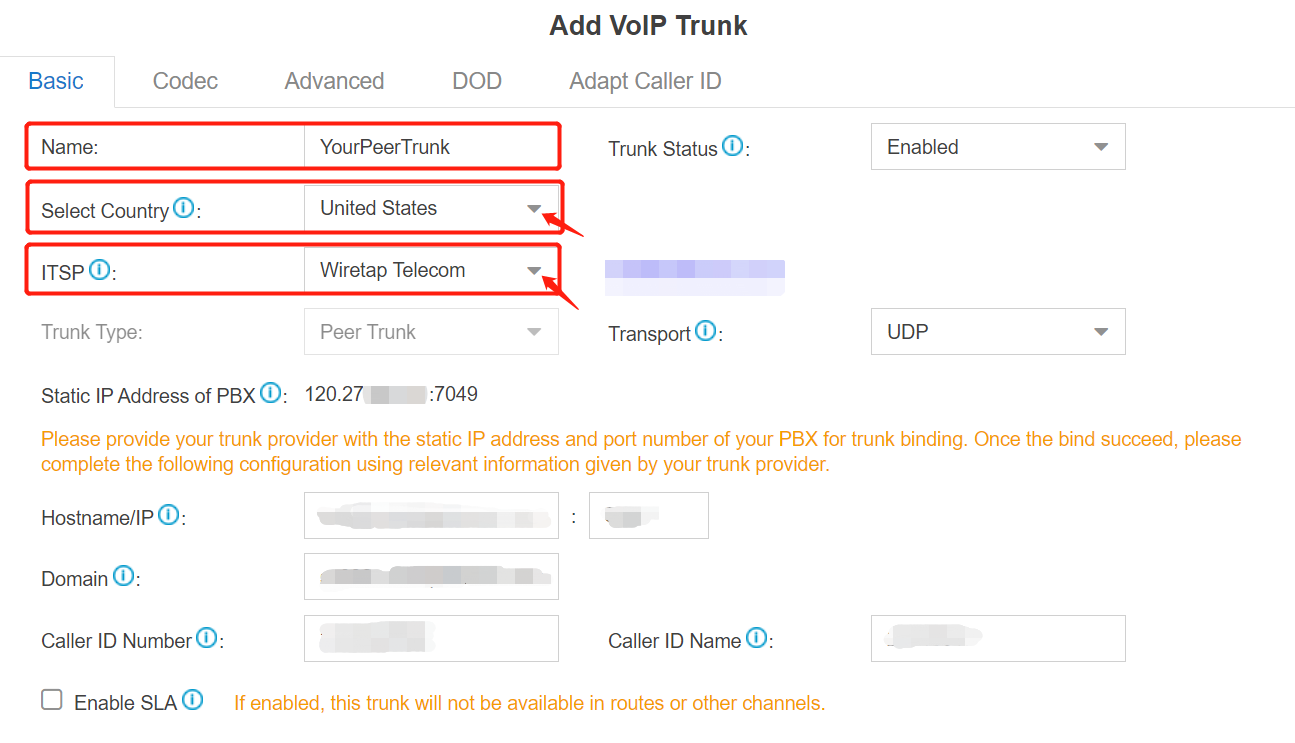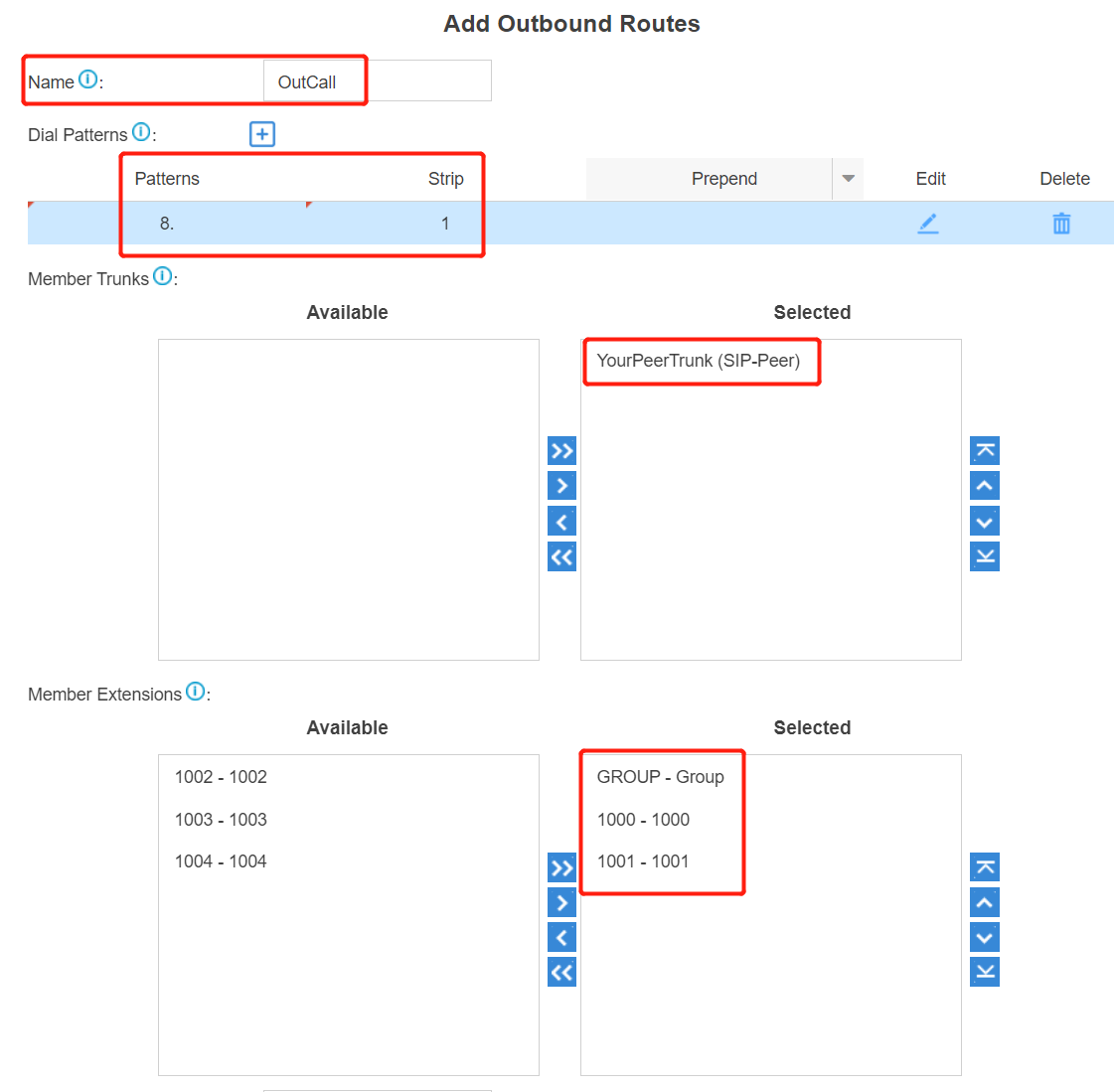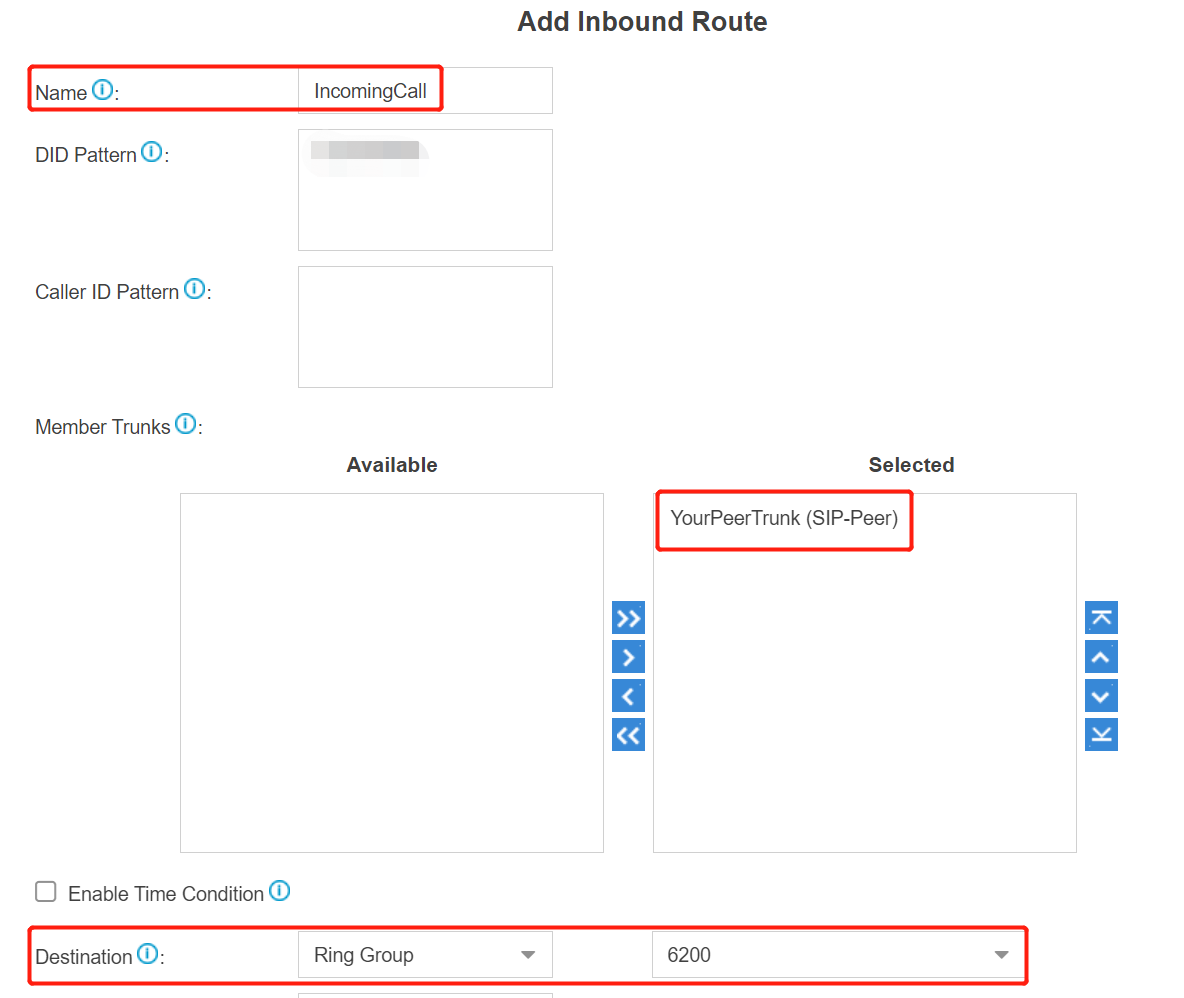Peer Trunk Configuration Guide
How to configure SIP peering trunk with Yeastar Cloud PBX
Configure a Peer Trunk
1. Create an Account with the peer trunk provider
To start with, you need to have an account from your peer trunk provider.
2. Add a Peer Trunk in Cloud PBX
After you get the trunk account, you need to add a trunk in Yeastar Cloud PBX.
Go to Settings > PBX > Trunks, click Add.

3. Configure the trunk
If your trunk provider has been certified by Yeastar officially, you can select “your country” from the drop-down list and select the “ITSP name”. All the parameters are embedded except the account registration information. If your trunk provider is not a Yeastar-certified one, then please choose General and fill in all the parameters needed.

- Name: give this SIP trunk a name to help you identify it.
- Protocol: SIP.
- Trunk Type: Peer Trunk. Yeastar has 4 types of peer trunk: DID-based, Port-based, Domain-based, and Private Network. The default trunk type is already embedded according to the certified trunk provider.
- Transport: UDP, TCP, TLS, or DNS-NAPTR. The default transport is already embedded.
- Static IP address of PBX: please give this static IP address of your Cloud PBX to Gamma for trunk binding.
- Hostname: your trunk account hostname or IP address.
- Domain: same as hostname.
- DID Number: insert the DID number here to distinguish calls coming from the same trunk.
- Caller ID Number: your trunk account DID number.
4. Check the Trunk Status
Click Save and Apply. Go to PBX Monitor to check if the trunk is connected successfully as the screenshot below shows.

Configure the Outbound Route with Peer Trunk
To make outbound calls via the newly created trunk, you need to configure an outbound route for the trunk.
1. Create an Outbound Route
Go to Settings > PBX > Call Control > Outbound Routes, click Add.

2. Configure the Outbound Route
The system compares the number with the pattern that you have defined in your route 1. If it matches, it will initiate the call using the selected trunks. If it does not, it will compare the number with the pattern you have defined in route 2 and so on. The outbound route which is in a higher position will be matched firstly.
You can adjust the outbound route sequence by clicking these buttons![]()

- Route Name: give this outbound route a name to help you identify it.
- Dial Patterns: set the dial patterns. As the settings below, to make calls via the peer trunk, you need to precede the number to be dialed with the prefix 8.
- Dial Pattern: 8.
- Strip: 1
- Member Extensions: select the extensions that are allowed to make calls through the outbound route.
- Member Trunks: select the peer trunk.
3. Click Save and Apply
Now you can make outbound calls through the peer trunk. As the dial patterns configured above, you need to dial “8” before the destination number.
For example, to call the number “01234567”, you need to dial “801234567” on your phone.
Configure the Inbound Route with Peer Trunk
To specify how calls from the peer trunk should be routed, you need to configure an inbound route for the trunk.
1. Create an Inbound Route
Go to Settings > PBX > Call Control > Inbound Routes, click Add.

2. Configure the Inbound Route

- Name: give this inbound route a name to help you identify it.
- Member Trunks: choose the peer trunk.
- Destination: select the destination where the incoming calls will be routed.
3. Click Save and Apply
When you call in the peer trunk, the call will be routed to the destination configured on the inbound route.
